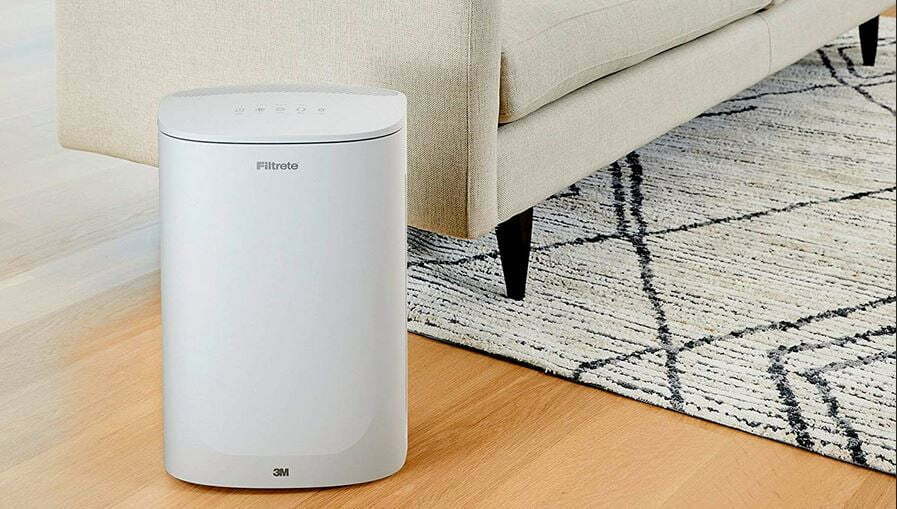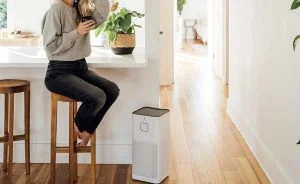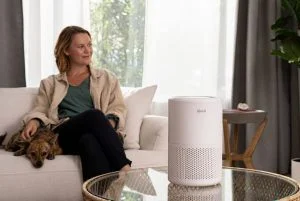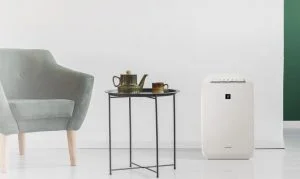Want to buy a dust removal air purifier?
In this article, you’ll find recommendations for the best-valued air purifier to remove dust.
However, it is important to note that we, at www.airpurifiergalore.com believe that unless you have a health problem, you don’t need any air purifier to control dust. Regular vacuuming and wiping go a long way to controlling common household dust.
In contrast, if you are one of the people who suffer from dust allergy, then we hope that a good quality air purifier can make a difference in your life.
(You can see whether you actually need an air purifier to remove dust from your surrounding by reading our article: Do You Need an Air Purifier for Dust Control ?)
NOTE: If you are in hurry for shopping, go straight to our recommendation section. Otherwise, we encourage you to scroll down to read our evaluation criteria for choosing the best dust air purifier.
Best Air Purifier to Remove Dust – Evaluation Criteria
In choosing the best dust removal air purifier, we set the following criteria:
First, it’s safe.
With regard to the safety of air purifiers, it is recommended to only choose a dust removal air purifier that does not produce ozone, a strong oxidizer that can irritate respiratory pathways and soft tissues.
As a rule of thumb, all HEPA filter-based air purifiers do not emit ozone, whereas most ionic air purifiers and all ozone air purifiers emit ozone, hence posing some health hazards. There are exceptions on this, but generally, ionic air purifiers emit ozone, albeit within EPA guidelines.
Second, it’s effective without being overboard.
It is important to have a dust removal air purifier that meets your needs. There is no use to go overboard and buy the most expensive air purifier out there if you need it to curb dust, both visible and nonvisible. However, if you have severe asthma, COPD, or chemical sensitivity, along with your allergy, then it’s worth buying the top-of-the-class air purifier so that you can get the relief you deserve.
In fact, if you suffer from respiratory diseases, we suggest you have a look at our asthma air purifier page, where we outline the criteria and recommendations for people with respiratory disease.
We also would not choose air purifiers that are cheap and are only equipped with HEPA-like, as opposed to, true HEPA filters, because they won’t be good enough to control and remove dust to make any difference in the life of an allergy sufferer.
Third, it offers the best value.
The best way to examine value is to look at two things:
- Cost vs power.
- Effectiveness
As a rule, an air purifier that is good for 500 sq. feet should be priced at less than $500.
US and European-made premium (top of the line) air purifiers such as Blueair, IQAir, and so forth, tend to be priced very close or a bit more than the standard we quoted above. But they are very effective, being able to capture every size and all sorts of air contaminants at more than 85% effectiveness per single pass. The top of the line air purifiers such as IQAir, Alen, and Blueair, even manages to get that figure to over 99%. This is no small feat.
Air purifiers made by US home appliance manufacturers, including Honeywell, Hamilton Beach, and so forth, tend to be priced lower. So you have, for instance, an air purifier for 350 sq. feet priced at just below $200. They are good, but not as good as the premium air purifier. The average effectiveness to curb all sorts of air contaminants per single pass is anywhere between 65-75%.
We find that the best dust removal air purifiers are produced by Asian-made companies. Their products are priced similar to air purifiers put out by US appliance manufacturers, but their products are more effective, much quieter, and contain modern conveniences. In terms of effectiveness, these Asian-made air purifiers even manage to get close to the levels of US/European-made premium air purifiers.
Therefore, if you are looking for the best air purifier for dust removal, we wholeheartedly recommend these air purifiers.
Best Dust Removal Air Purifier
1. Smaller Room ~ Winix Plasmawave 5300
Winix PlasmaWave 5300 Air Cleaner is a very good unit for a room approximately 200-300 sq. feet. Considering its effectiveness and price (approximately $180), this is one of the dust removal air purifiers with the best value. One caution though, depending on the severity of your allergy, you may want to place this dust air purifier in a room smaller than the recommended size (350 sq. feet). Since the CADR (clean air delivery rate) of this air purifier is 248 for dust, 235 for smoke, and 251 for pollen, it’s best to be placed in a 300 sq. feet room for a mild dust allergy sufferer, or in a 200 sq. feet room for people with a more severe allergy, instead of the recommended 350 sq. feet.
This Korean-made air purifier has a safe and sound filtration technology. It comes equipped with a germicidal prefilter, a true HEPA filter, a germicidal screen, and an activated carbon filter to address gases and odor problems. Instead of using an ionizer to boost its gas-curbing power, it uses plasma technology, termed plasmawave. Basically, this machine sends out hydroxyl radicals, which are strong oxidizers with a very short half-life. These radicals will then neutralize gases, bacteria, and so forth.
If you opt for Winix Plasmawave and want more control on odor, smoke, and gases, you will have to rely on the plasmawave technology a lot, since the machine’s activated carbon filter content is not substantial enough to have a rapid effect on gas removal. However, you need to place the machine such that it’s not too close to the users when it’s on the plasmawave mode.
Similar to other Asian-made air purifiers, Winix Plasmawave comes with a lot of bells and whistles. Timer, various sensors, and remote control are available with this machine. In addition, this machine is also as quiet as a mouse and is energy star-certified.
2. Bigger Room ~ Rabbit Air BioGS
If you’re looking for the best dust air purifier for a bigger room, look no further than Rabbit Air BioGS series.
Although when first came up they were priced around $500-650 (MSRP), these good quality air purifiers have had the price slashed for quite a while now. Therefore, only with $330 or $399, you can own either Rabbit Air BioGS 421A (certified for 600 sq. feet) or Rabbit Air BioGS-582A (certified for 780 sq. feet), respectively. However, if you have an allergy, we recommend you to increase the air change of these air purifiers by putting them in smaller rooms as follows:
- People with mild to moderate dust allergy: place BioGS-421A in a 450 sq. feet room, or place BioGS-582A in a 600 sq. feet room.
- People with moderate to severe dust allergy: place BioGS-421A in a 350 sq. feet room, or place BioGS-582A in a 480 sq. feet room.
Briefly, this series of air purifiers are equipped with a prefilter, germicidal true HEPA filter (BioGS HEPA filter), and activated carbon filter which is effective to filter gases. This arrangement is pretty standard for any good-quality HEPA filter air purifiers. However, what makes these dust removal air purifiers unique is the use of germicidal filter which is still rare in US/European-made air purifiers, but is actually pretty common in Asian-made air purifiers.
Also, in common with other Asian-made air purifiers, Rabbit Air purifiers are quiet and almost silent at the lowest setting (19 dbA is like the sound of rustling leaves), do not consume much energy, are equipped with remote control, have ozone-free ionizers, and come with air quality monitoring system/sensor. In short, Rabbit Air BioGS is the best dust removal air purifier because it’s effective, equipped with modern conveniences, stylish, and is cheap for what it’s capable to do.
Do You Really Need an Air Purifier to Control Dust and Does It Work to Eliminate Dust?
Before answering this question, let’s see what kind of dust is present in the air and which one we want to get rid of.
Basically, household dust usually contains at least a few of the following nasty allergens: dust mites, fungi, mildew, insects, pollen, chemical gas (from insecticides, household cleaners, and so forth), and animal dander, with sizes ranging from 0.001-10,000 micron.
If you are not sure how big a micron is, then think of a grain of salt. It is around 60 microns in size.
Any visible dust particulates, including some pollens, mold spores, industrial dust, and settling particles, are bigger than 10 microns. Unfortunately, those visible dust particulates, actually constitute only 1% of the whole household dust population, and dust of those sizes is easily expelled by our nose. The danger actually lies in non-visible dust with a size smaller than 2 micron, which includes smoke particles, suspended dust particles, virus and gas molecules, because they are the most penetrating dust and can easily get and irritate our lungs. Unfortunately, dust of that size constitutes 90% of the whole population of dust.
Many allergic people are thinking of using an air purifier for dust control. However, when talking about eliminating dust, most people think of visible dust. However, for allergic people, we recommend to not think ‘dust’ as visible dust only, but all spectrum of dust, visible or not. Therefore it is important for allergic people to buy an air purifier that is effective to remove all kinds of dust. Only by doing so, a difference in health can be felt.
Besides, if your goal in buying a dust air purifier is just for removing visible dust, there are other ways for doing it. Vacuuming and wiping regularly can go a long way to remove visible dust.
Still, some like to buy cheap air purifiers with HEPA-like or worse kind of filters which can control visible dust. Honestly, we are doubtful that such air purifier will make a difference if wiping and vacuuming are already done regularly, because what those cheap air purifiers do are mainly removing visible dust, which would have been removed by vacuuming and wiping anyway. All in all, if you have a health problem, you really need to remove all kind of dust. We believe, that in this situation, the use of air purifier for dust control is warranted and could make a difference in your life.
We recommend you to get an air purifier with true HEPA (not HEPA-like) filter and gas filter for this purpose.For dust allergy purpose, the dust air purifier doesn’t have to be the higher end one, but it needs to be of good quality.
Why Sometimes Dust Air Purifier Doesn’t Seem to Work
There are reason why sometimes dust air purifier doesn’t seem to make a difference for dust allergic people.
First, it could be the quality of dust air purifier bought is not good enough to address the problem. We stress one more time, that cheap air purifiers which only eliminate visible dust, are\ not effective enough to make a difference in allergic people’s life.
Second, your problems may be multifactorial and you need to address different aspects of your health problems simultaneously.
For instance, if you have a chemical sensitivity issue on top of your dust allergy, then you need to get the top of the line air purifier and remove the source of chemicals from your life. Air purifier which is good for eliminating dust is sometimes not good enough for people with problems more severe than that.
Similarly, if you have a cold-induced asthma with allergy, then your cold-induced asthma won’t be affected at all even if you use the top of the line dust air purifier.
Shopping Guide to Buy Air Purifier for Dust Control
After determining whether you actually need an air purifier for dust control in your surrounding, it’s shopping time. Below is a guideline that will be helpful for you when you go and buy a dust air purifier.
Safety Issues.
When buying an air purifier to eliminate dust, it is best to make sure that it’s safe. What we mean by safe is it does not produce an unacceptable amount of ozone. It is important to understand that some types of air purifiers emit ozone, a reactive radicals which can irritate lungs, soft tissues, and our respiratory pathways. Most air purifiers are safe, according to the standard put out by EPA (Environmental Protection Agency).
However, even when an air purifier follows the EPA standard of ozone emission, it is possible to have an air purifier that emits ozone at the above background amount. This problem is compounded if the air purifier is not used according to the manufacturer’s recommendation, for instance, when the air purifier is used in much smaller rooms than intended. Therefore, to be completely safe, it is prudent to buy dust air purifiers that either emit no ozone or emit ozone below background levels.
As a rule of thumb, all HEPA filter-based air purifiers do not emit ozone. Beware of ionic air purifiers, electrostatic air purifiers, electronic air purifiers, and ozone air purifiers since they (not all) usually emit some ozone.
Second, it’s right for your needs – room consideration.
Before buying an air purifier for dust control, think where you would like to put that in.
Do you want to put it in a big room?
Or small room
Living room?
Or bedroom?
Not only does this have something to do with the air purifier capacity, but also with the noise factor. For instance, if you want to have a dust air purifier for your bedroom, then it will be better to get the one that is quiet, whereas the noise factor may not be that critical if you want to put the air purifier in the living room.
Capacity-wise, we think the best way to work out the air purifier capacity in regard to the room size is to use the airflow rate in cubic feet per minute for maximum speed (cfm), which is also a little bit less than the CADR or air delivery rate number (you will find CADR number in air purifiers which are tested by AHAM -Association of Home Appliance’s Manufacturers). The industry standard of air change is 2 air changes per hour. But, to get the maximum effects, especially for those who suffer from serious problems, it is better to aim for 6 air changes per hour.
This means if you have a room with an 8-foot ceiling, and 250 sq feet area, you would need an air purifier with a capacity of 200 cfm or with CADR number of a bit more than 200. You may be able to get away with less power if you have a milder problem or if you use good-quality dust air purifiers because their air purification efficiency for every single pass of air is very high.
Please be aware that this recommendation may not the same as the manufacturer’s suggestion since some manufacturers inflate the room size recommendation. Therefore, it is always wise to calculate the appropriate size yourself based on the cfm/CADR data of a particular air purifier.
To Sum Up – What to Look When Shopping for Air Purifier for Dust Control
To sum up, these are criteria to use for shopping dust air purifier:
- have the true HEPA filter to ensure safety and efficiency.
- the air purifier should have tight housing to prevent bypassing of dust.
- it should be appropriate for your health and room needs.




